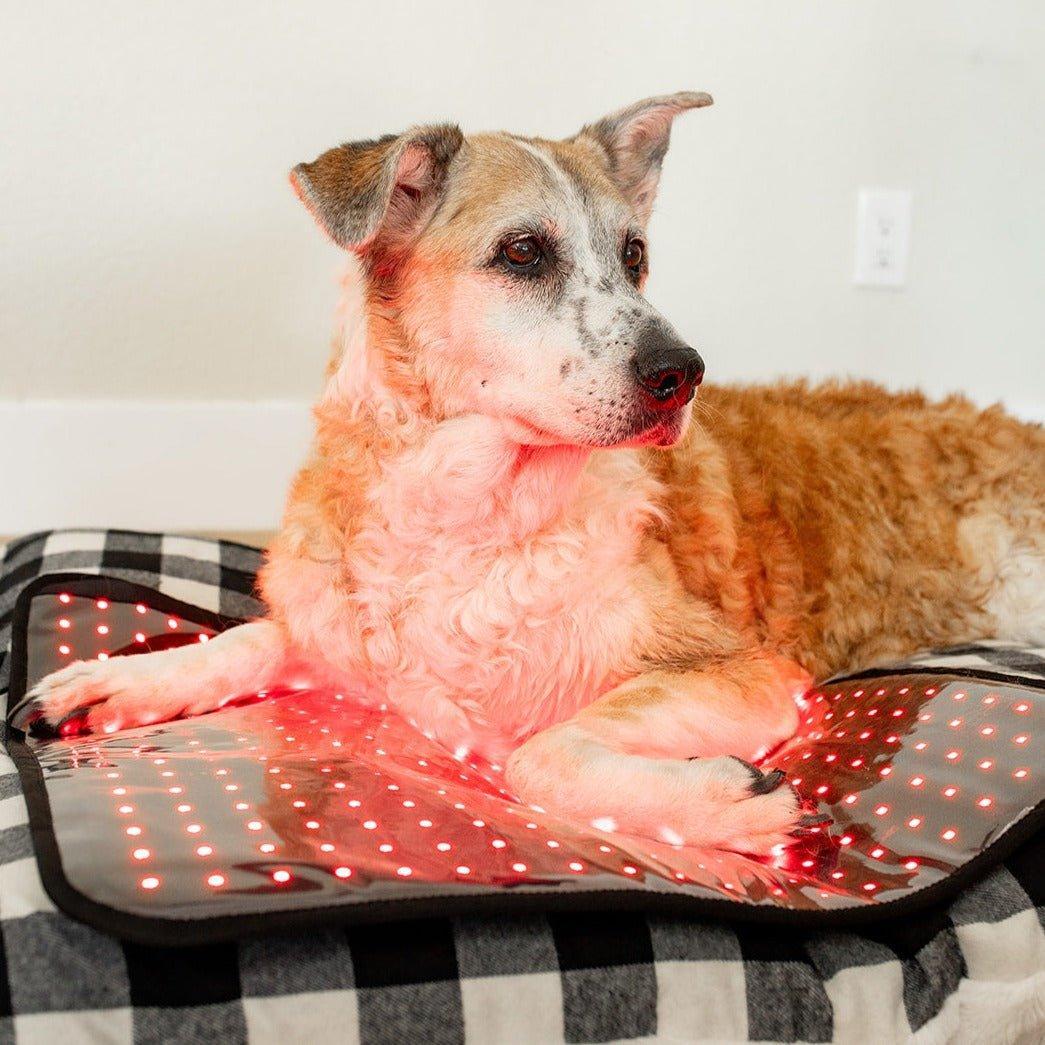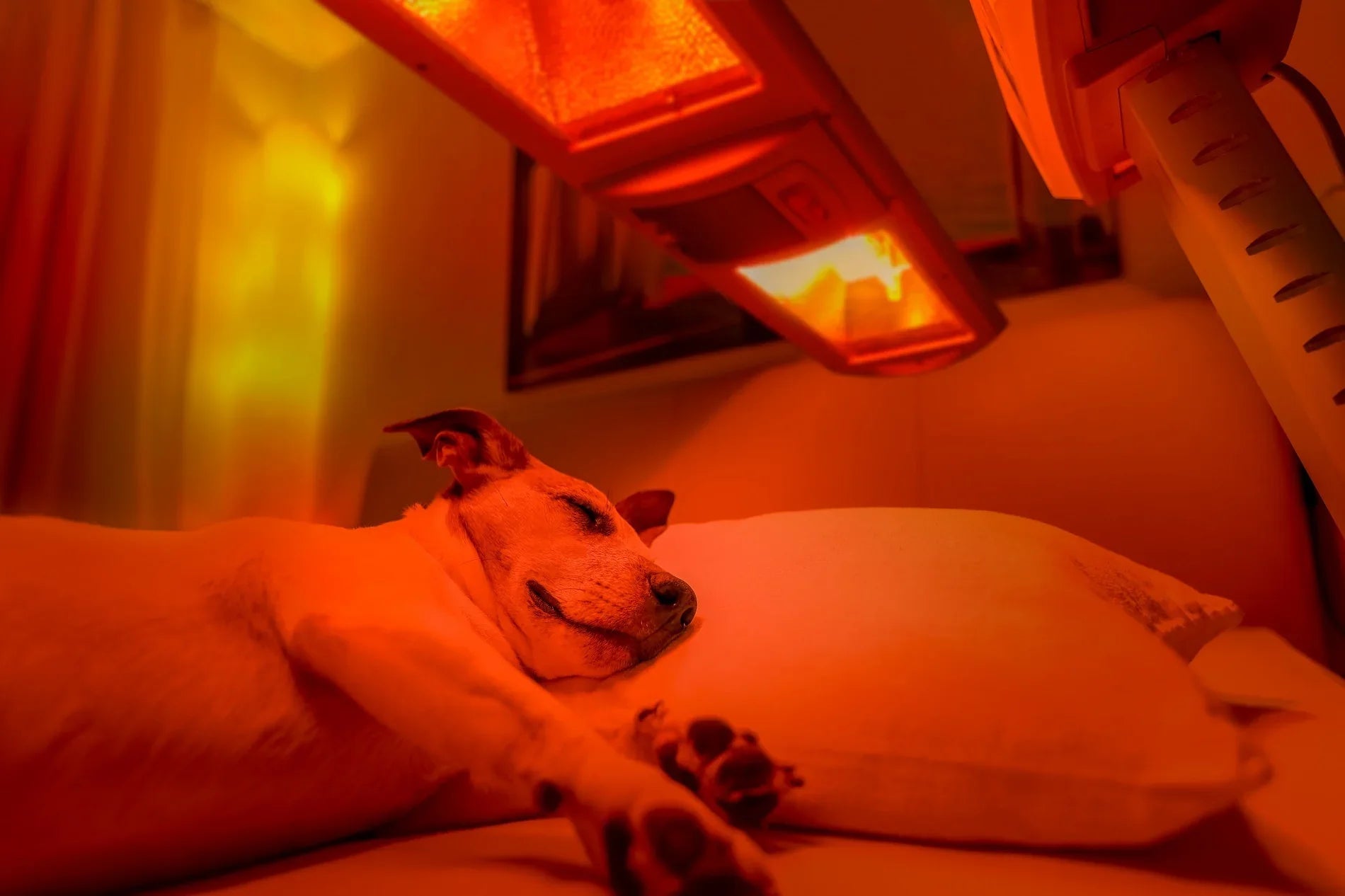Red Light Therapy Dogs: Facts vs. Myths
How Red Light Therapy Can Enhance Your Dog's Total Well-Being
Red Light Therapy has become an appealing option for enhancing canine health. This non-invasive therapy promotes mobile task and promotes recovery in pets dealing with various conditions. Several family pet owners report obvious advantages, including discomfort relief and enhanced movement. Nonetheless, understanding the underlying mechanisms and prospective applications is important. What specific conditions can it deal with, and how can it be securely incorporated into a canine's treatment programs? The responses might stun you.
Recognizing Red Light Therapy: What It Is and Exactly how It Works
Red light therapy has actually acquired appeal in human medication, its application for pets is increasingly recognized for its potential advantages. This non-invasive therapy uses particular wavelengths of light, commonly in the red and near-infrared spectrum, to promote cellular feature. The underlying concept entails the absorption of light by mitochondria, which enhances ATP production and enhances mobile metabolic process.
Because of this, red light therapy promotes enhanced flow and help in cells repair service. The therapy is provided via devices such as lasers or LED panels, which can be directed at certain locations of a pet dog's body. Treatment sessions are generally short, making it a convenient option for animal proprietors.
Comprehending this technology's mechanisms can help caregivers make informed decisions regarding their pet's healthcare. As research continues to advance, the rate of interest in red light therapy as a complementary therapy technique for different canine conditions is likely to grow.

Advantages of Red Light Therapy for Dogs
Red light therapy offers several substantial advantages for pet dogs, consisting of efficient discomfort relief and an increased healing process. This therapy can boost movement and versatility, making it particularly useful for aging or injured pets. As more animal proprietors look for alternate treatments, recognizing these benefits becomes significantly vital.
Pain Alleviation Applications
Lots of canine owners are turning to red light therapy as a promising remedy for minimizing pain in their pets. This non-invasive treatment utilizes details wavelengths of light to pass through the skin, promoting cellular task and reducing swelling. Canines enduring from persistent conditions such as joint inflammation, hip dysplasia, or post-surgical discomfort might experience considerable relief with this therapy. Studies show that red light therapy can boost blood circulation, aiding to deliver essential nutrients to influenced locations, better adding to discomfort decrease. Furthermore, it might help to decrease the reliance on pharmaceutical painkiller, which frequently feature undesirable negative effects. Therefore, many veterinarians are increasingly recommending red light therapy as a effective and safe choice for managing pain in dogs.

Accelerated Recovery Process
The advantages of red light therapy expand past discomfort alleviation, playing an important duty in increasing the recovery procedure for pets. This innovative treatment advertises cellular regrowth, boosting the production of ATP, which improves energy availability for recovery cells. Additionally, red light therapy enhances blood circulation, resulting in enhanced oxygen and nutrient delivery to hurt locations. This heightened blood circulation not only aids in faster recovery yet likewise minimizes inflammation, a typical obstacle to recovery. Additionally, the therapy motivates collagen manufacturing, important for tissue repair work and regeneration. In general, by facilitating these biological processes, red light therapy considerably shortens recuperation times, enabling pets to return to their regular activities much more swiftly and with higher vitality.
Improved Mobility and Versatility
Enhanced mobility and flexibility are substantial advantages of red light therapy for pets, specifically for those experiencing joint pain or stiffness. This non-invasive therapy utilizes specific wavelengths of light to penetrate cells, promoting boosted blood circulation and reducing inflammation. As a result, dogs usually experience remedy for pain connected with joint inflammation, hip dysplasia, or post-surgical recovery. Normal sessions can promote mobile repair service and boost muscular tissue function, allowing pet dogs to reclaim their all-natural variety of motion. Proprietors have actually reported obvious improvements in their family pets' ability to run, leap, and take part in activities they when took pleasure in (Red Light Therapy Dogs). Ultimately, red light therapy not only aids ease discomfort yet additionally contributes to a much more active and fulfilling way of life for pet dogs, enhancing their overall top quality of life
Problems That Can Be Treated With Red Light Therapy
Although check that red light therapy has gained popularity in numerous fields, its application in veterinary care, specifically for pets, has actually revealed guarantee in treating a series of problems. This non-invasive treatment method is thought to aid in minimizing pain and inflammation connected with joint inflammation, assisting older canines reclaim mobility. Additionally, it has been made use of to assist in the healing of injuries, burns, and surgical lacerations, promoting faster recovery times.
Skin problems, such as dermatitis and warm spots, may likewise react favorably to red light therapy, minimizing inflammation and motivating healthier fur growth. In addition, the therapy can be beneficial for dogs suffering from conditions like hip dysplasia, tendon injuries, and muscle strains. By stimulating cellular repair work and boosting flow, red light therapy offers an alternative approach to enhancing the general wellness of dogs, giving relief and advertising a much better high quality of life.
The Science Behind Red Light Therapy
Red light therapy operates on the principle of photobiomodulation, which entails the application of particular wavelengths of light to stimulate cellular processes. These wavelengths, commonly varying from 600 to 1000 nanometers, penetrate the skin and are soaked up by mitochondria, the energy-producing elements of cells. This absorption boosts ATP manufacturing, leading to increased power availability for cellular functions.

Studies recommend that red light therapy may additionally modulate immune reactions and assistance overall mobile health and wellness. By harnessing these organic systems, red light therapy provides a non-invasive treatment option that can add substantially to a pet's well-being and recuperation from various conditions.
Just How to Integrate Red Light Therapy Into Your Dog's Routine
Integrating red light therapy into a dog's regimen can be a simple process, supplied that pet proprietors approach it with treatment and uniformity. First, picking an appropriate device is essential, as alternatives array from portable units to bigger panels. Proprietors must begin by presenting the therapy progressively, allowing their pet dogs to acclimate to the light direct exposure. Sessions can be arranged for about 10 to 20 mins, preferably two to 3 times a week, depending upon the pet's demands and the recommendations of a vet
Setting a comfortable environment is necessary; using a silent space where the pet really feels kicked back can boost the experience. Throughout the sessions, owners can involve their pet dogs with comforting voices or gentle petting to create a calming atmosphere. Checking the canine's response is essential to guarantee the therapy is beneficial and satisfying, inevitably assisting to enhance their total well-being.
Safety And Security Considerations and Precautions for Red Light Therapy
When thinking about red light therapy for pets, safety and security should constantly be a top priority to guarantee a positive experience. Pet proprietors should speak with a vet before beginning any type of therapy, specifically for canines with pre-existing problems or those taking drugs. It is vital to choose devices especially developed for animals, as human gadgets may not be ideal.
Proper eye security is important; both the dog and the trainer should use goggles to shield their eyes from potential harm. In addition, sessions ought to be monitored very closely to prevent overexposure. It is recommended to begin with shorter sessions and slowly enhance period based upon the pet's feedback.
Proprietors must additionally observe their animals for any kind of signs of pain or unfavorable reactions during and after therapy. By adhering to these safety and security considerations, red light therapy can be a helpful and secure choice for boosting a canine's wellness.
Often Asked Inquiries
Exactly how Commonly Should I Make Use Of Red Light Therapy on My Dog?

Can Red Light Therapy Replace Typical Vet Therapies?
Red light therapy ought to not replace standard vet therapies. While it may complement treatments by promoting recovery and reducing discomfort, consulting a vet remains crucial for detailed care and addressing hidden health problems in pets.
Exist Any Side Effects of Red Light Therapy for Dogs?
Red light therapy for dogs visit our website generally has very little adverse effects, such as temporary skin inflammation or heat at the treatment website. Many dogs endure the therapy well, but keeping track of for any kind of uncommon reactions is suggested.
What Is the Ideal Duration for Each Red Light Therapy Session?
The optimal duration for each red light therapy session commonly ranges from 10 to 20 minutes, depending upon the canine's specific needs and problem. Examination with a vet is recommended to tailor the therapy suitably.
Is Red Light Therapy Suitable for All Canine Types?
Red light therapy is normally ideal for the majority of dog types. Specific health and wellness conditions and level of sensitivities might impact its applicability. Consulting a veterinarian assures the therapy is helpful and safe for every details pet dog.
Several dog owners are turning to red light therapy as an encouraging remedy for reducing discomfort in their family pets. Improved mobility and adaptability are substantial advantages of red light therapy for canines, particularly for those suffering from joint discomfort or rigidity. Red light therapy runs on the principle of photobiomodulation, which includes the application of specific wavelengths of light to stimulate cellular procedures. Research study suggests that red light therapy can promote recovery, lower inflammation, and alleviate discomfort in canines. Red light therapy for dogs normally has very little you can try here side effects, such as short-term skin soreness or heat at the therapy site.